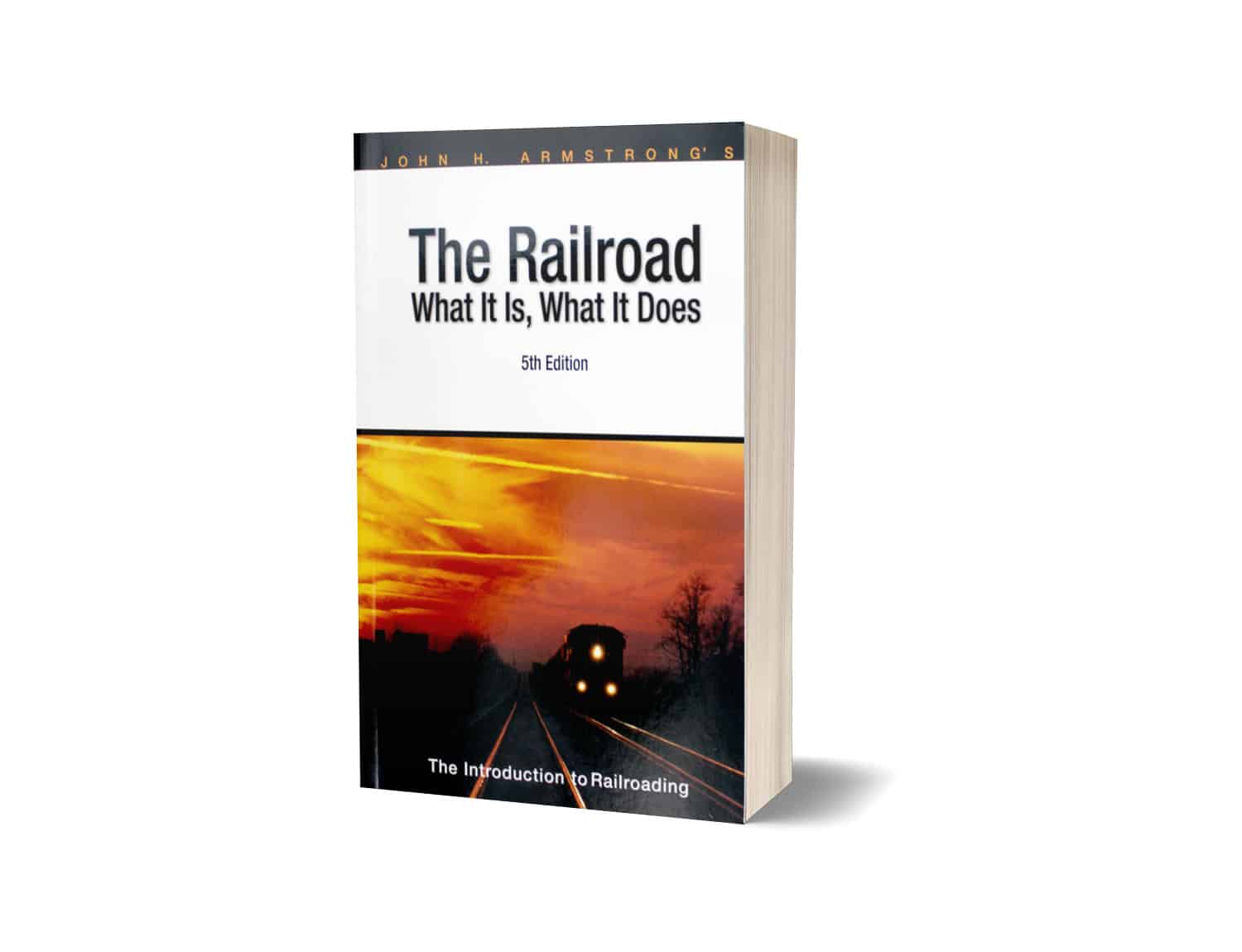The Railroad: What It Is, What It Does – 5th Edition
$49.95
Publication Info
- 406 pages
- Simmons-Boardman Books, Inc. (2008)
- ISBN: 978-0-911382-58-7
- Dimensions (in inches): 6x9
The fifth edition of The Railroad: What It Is, What it Does is even more valuable than before. Inside you’ll find a comprehensive look at how today’s railroads function-from equipment to procedures and marketing to maintenance.
This book is ideal for novices and experts alike. The easy-to-read narrative presents a brief history of railroading from the coal-fed “iron horses” that helped build a nation to the latest generation of EPA-compliant locomotives. You’ll also find current information on new technologies such as ECP brakes and computer-assisted transportation systems.
The fifth edition is an indispensable resource for anyone wanting to learn about modern day railroads. The book delves into many facets of the railroad industry including such topics as freight cars, locomotives, track, signal and communication technology, intermodal traffic, operations, labor relations, and design engineering. Softcover.
The following list provides a brief explanation of what you’ll find in each chapter:
- Railroad Technology-The Tools of the Trade-A look at some basic principles behind rail transportation.
- A Hypothetical Railroad-A composite example of a typical railroad is employed to explain railroading concepts throughout the text.
- The Track: Alignment and Structure-Major track components and engineering issues are addressed.
- The Locomotive-An informative look at today’s modern, high-tech locomotives.
- The Railroad Car-The essential components found on a typical freight car including, bearings, wheels, suspension systems and more.
- The Train-Putting it all together-couplers, draft systems, braking systems and more working together.
- Signals and Communication-A look at the technology that keeps a railroad running safely and smoothly including signaling systems, traffic control systems, advanced train control system and more.
- Railroad Operation-Moving From Here to There-A behind the scenes look at moving freight through the system and an introduction to the concept of interchange.
- Car Types, Commodities, and Carloadings-An introduction to the highest volume commodities and the cars best suited to move them.
- Car Ownership and Distribution-A detailed look at rules pertaining to car owners and how cars move within the general railroad system.
- Terminal Operations-Where the first and last steps in a rail movement take place.
- Classification and Blocking-How railcars are assembled into trains to reach their destination.
- Line-Haul Operations-An introduction to how trains are moved from point to point.
- Unit-Train Operations-How a train comprising of a single commodity, such as coal, is moved.
- Intermodal Traffic-How freight is moved in trailers and containers on two or more modes of transportation.
- Special Freight and Package Services-Moving less-than-carload and express package shipments by rail.
- Rail Passenger Services-An overview of transit, commuter, intercity, and high-speed rail, including Amtrak.
- The Railroad Organization-Corporate structure and finance in today’s railroads.
- Administration, Law, Accounting-An introduction to top issues such as human resources, public relations, real estate and insurance, and forecasting.
- Labor Relations and The Railway Labor Act-The role of organized labor and what the Railway Labor Act means to the rail industry.
- Business Development and Marketing-A close look at business development from the viewpoint of freight railroads and customers.
- Operations-Statistics and issues important to the operations department.
- Transportation-The people who actually run the railroad, from supervisors to train and engine personnel.
- The Engineering and Mechanical Departments-How the departments that are responsible for cars, locomotives, buildings, track, roadway, and structures are organized.
